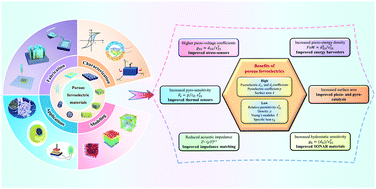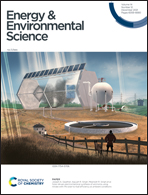Porous ferroelectric materials for energy technologies: current status and future perspectives
Abstract
Ferroelectric materials have attracted significant interest due to their wide potential in energy harvesting, sensing, storage, and catalytic applications. For monolithic and dense ferroelectric materials, their performance figures of merit for energy harvesting and sensing are limited by their high relative permittivity, and their low surface area can limit piezo- or pyro-catalytic applications. As a result, the introduction of porosity into dense ferroelectric materials can enhance performance for a variety of piezoelectric and pyroelectric applications. In this review, the piezoelectric, pyroelectric, ferroelectric and mechanical properties of porous ferroelectrics are presented, and the fabrication processes to create porous ferroelectric materials are classified and discussed. Simulations of the poling process and resulting piezo- and pyro-electric properties are also described to understand the underlying science of these fascinating porous materials and develop new approaches towards materials design. Applications of porous ferroelectric materials in specific fields are then summarized. Finally, conclusions and future perspectives for porous ferroelectric materials are provided.



 Please wait while we load your content...
Please wait while we load your content...